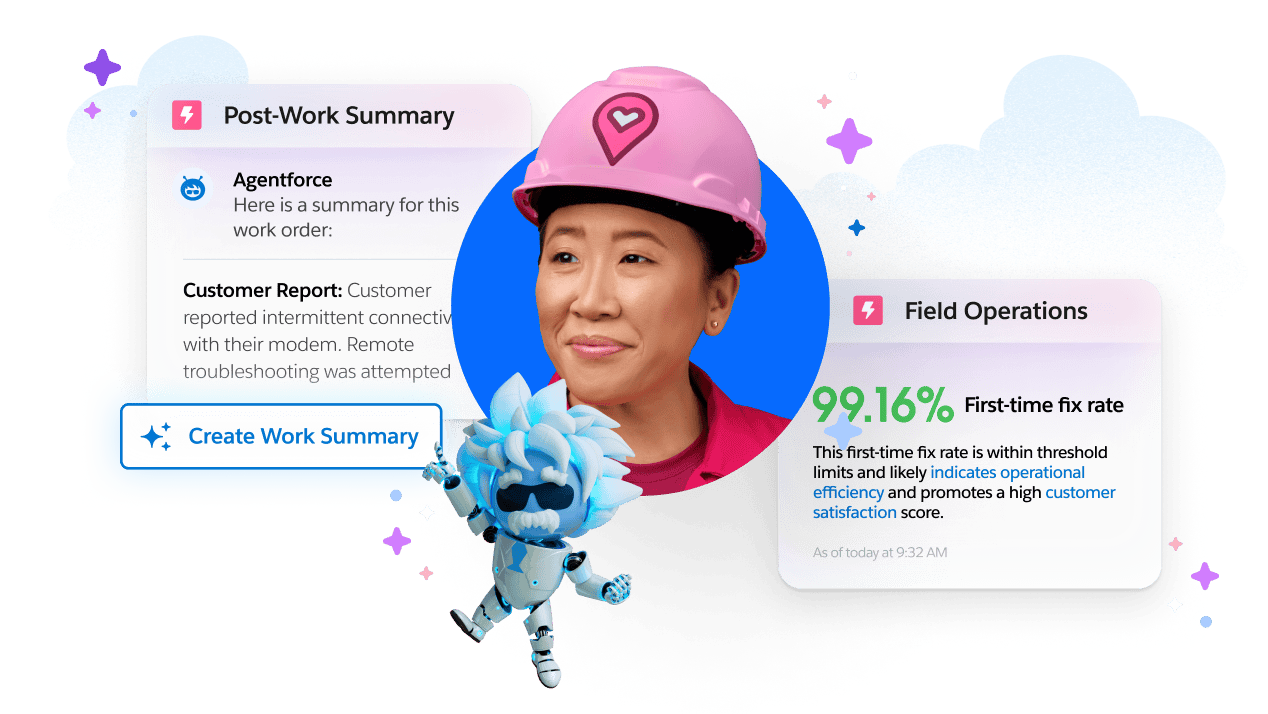You don’t notice field service. Not until it stops.
Picture this: production lines that stall mid-shift, hospital elevators that stand idle, and connected homes that flicker off — not because of a system failure, but because the people who keep those systems running aren’t there.
For years, field service has kept businesses running, often without recognition. When something breaks, the people in the field know what it takes to fix it, and what it costs when they can’t. They see patterns long before a dashboard does, and they know how a single delay can ripple across customer relationships.
Yet, that knowledge rarely reaches the boardroom. Field service is still too often seen as a function that reacts, not one that drives growth. But that’s changing — as AI, connected workflows, and real-time data bring the field closer to the business, the potential for impact is becoming clear.
Here are four ways to turn field service from a cost centre into a competitive advantage.
1. Empower field service teams with unified customer profiles
Even the best pit crew can’t win a race without knowing the car inside out. Field service teams face the same challenge: they can only deliver a great experience when they have the full picture before they arrive. Every visit depends on preparation — the right parts, the right information, and the right context. Without it, even a routine maintenance call can feel like a scramble.
That’s why preparation matters as much as skill. Unified customer data, including service history, asset details, and real-time insights, help field service teams arrive ready to solve the problem. Salesforce Field Service, powered by Data Cloud, Agentforce, and Tableau Next, does exactly this. It gives technicians an intelligent workspace that connects real-time customer data, asset details, and AI-led insights in one view, helping them:
- View complete customer and asset history before arriving on site.
- Access guided workflows and step-by-step checklists directly through the field service mobile app.
- Get AI-recommended actions and next best steps based on live data and past outcomes.
Tata Power Solaroof empowers its field service teams with a mobile-first solution, driving efficiency and reducing turnaround time by 58%



2. Adopt a proactive approach with predictive insights
Remember the last time a service call came in too late? The equipment had already failed, and the team was left scrambling to contain the fallout. That’s what reactive service looks like — always fixing, never getting ahead. It keeps the calendar packed, but it doesn’t build loyalty.
The best service teams work differently. Using connected assets and predictive insights, these teams spot issues before even the customer notices them, turning every maintenance visit into a chance to prove reliability.
Agentforce for Field Service connects data from assets, sensors, and service histories to detect risks before they escalate. Using AI reasoning, it recommends the right action, including assigning the best technician and lining up the right tools in real time. This lets organisations:
- Predict maintenance needs and schedule visits before downtime hits.
- Cut emergency repairs and reduce unplanned costs.
- Extend asset life and improve uptime.
3. Use intelligence to drive outcomes
You have seen this happen: one technician needs three visits to finish a job while another solves it in half the time.
The fun part? The system learns nothing from either. When information hides in tools and spreadsheets, it’s hard to tell whether the issue is skill, process, or just luck.
With Data Cloud, CRM Analytics, and agentic AI, Salesforce Field Service Intelligence brings all service data into one control centre. Managers can quickly see what’s working, what’s not, and make meaningful adjustments in real time. When patterns like repeat visits or route delays appear, leaders can step in early to fix what’s slowing teams down and replicate what top technicians are doing right. They can also plan smarter schedules, ensure proximity-based assignments, and reduce idle time of field service reps.
4. Keep customers in the loop at every step
“Is the technician on the way?”
“Do they have the spare parts?”
“Should I reschedule?”
These are the questions customers start asking the moment an appointment is booked. The work may be on schedule, but silence feels like poor service. Clear updates replace uncertainty and save field service teams from answering the same “just checking in” customer calls all day.
Salesforce Field Service with Appointment Assistant does this by:
- Showing live technician tracking so customers know exactly when help will arrive.
- Sending proactive notifications on WhatsApp, SMS, or email to keep customers informed even before they need to ask.
- Offering self-service options that let customers confirm, move, or cancel appointments instantly.
- Sharing real-time updates across teams so dispatchers, technicians, and managers always see the same information.
Elevate every field service experience with Agentforce





















